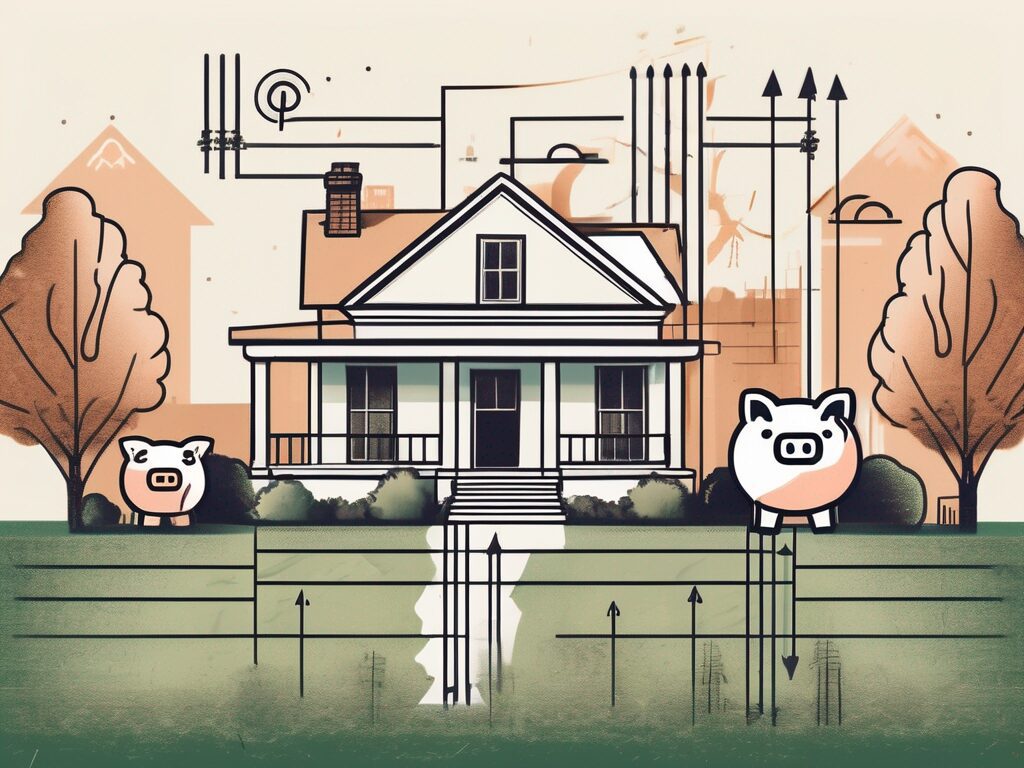
Agent A-Team or Solo Superhero? Finding the Right Real Estate Partner for Your Selling Journey in Wildwood Florida
When it comes to selling your home in Wildwood, Florida,…
January 29, 2024
When it comes to financing a home, veterans have a unique advantage thanks to VA loans. These loans have a rich history and offer numerous benefits, making them an attractive option for those who have served in the military. In this article, we will delve into the origins, criteria, financial aspects, and strategies associated with VA loans. By the end, you’ll have a comprehensive understanding of everything you need to know about VA loans.
VA loans have a long-standing history dating back to the 1940s. Following World War II, the Servicemen’s Readjustment Act of 1944, commonly known as the GI Bill, was introduced to support veterans in various aspects of their lives after wartime service. One of the key provisions of this legislation was the creation of VA loans, designed to help veterans achieve the dream of homeownership.
After the end of World War II, millions of veterans returned home, eager to rebuild their lives and start families. However, many faced significant challenges in transitioning from military service to civilian life. Recognizing the sacrifices made by these brave men and women, the government sought to provide them with opportunities for a brighter future.
The GI Bill, signed into law by President Franklin D. Roosevelt, aimed to address the needs of returning veterans in several ways. It provided educational benefits, job training, and unemployment compensation. Additionally, it included provisions for low-cost mortgages, known as VA loans, to help veterans purchase homes and establish stability for themselves and their families.
Over the years, VA loans have evolved to meet the changing needs of veterans. Originally, these loans were solely intended to assist veterans purchasing homes in rural areas, but in 1992, eligibility was extended to all veterans. This expansion opened up new possibilities for veterans, allowing them to pursue homeownership in any location they desired.
Recognizing the importance of adapting to the modern housing market, the Department of Veterans Affairs (VA) has continuously refined the VA loan program. In recent decades, further refinements have been made to streamline the VA loan application process and expand the program’s reach.
One significant improvement was the introduction of the VA Interest Rate Reduction Refinance Loan (IRRRL) in the 1980s. This program allowed veterans with existing VA loans to refinance at a lower interest rate, reducing their monthly mortgage payments and potentially saving them thousands of dollars over the life of the loan.
Another notable development in the evolution of VA loans was the introduction of the VA Cash-Out Refinance program. This program, established in the 1990s, allowed veterans to tap into their home equity and receive a cash payment, which could be used for various purposes such as home improvements, debt consolidation, or other financial needs.
In recent years, the VA loan program has also embraced technological advancements to make the application and approval process more efficient. Online portals and digital document submission have simplified the paperwork, reducing the time and effort required to obtain a VA loan.
Furthermore, the VA has implemented initiatives to provide additional support to veterans facing financial difficulties. Programs such as the VA Loan Modification and VA Compromise Sale offer options for veterans who may be struggling to meet their mortgage obligations, ensuring that they have access to resources and assistance when needed.
As the needs of veterans continue to evolve, so too will the VA loan program. The commitment to helping veterans achieve homeownership remains steadfast, and the VA will continue to adapt and improve its services to meet the changing landscape of the housing market and the unique circumstances of those who have served our country.
If you’re a veteran interested in obtaining a VA loan, it’s important to understand the eligibility requirements. While each lender may have specific criteria, VA loans generally have some key advantages over other mortgage options.
VA loans are specifically designed to help veterans achieve their dream of homeownership. These loans are backed by the U.S. Department of Veterans Affairs, providing lenders with a guarantee that reduces their risk. As a result, veterans are often able to secure more favorable terms and conditions compared to traditional mortgages.
One major advantage of VA loans is the more lenient credit score requirements compared to traditional mortgages. Veterans with less-than-perfect credit scores may still be eligible for a VA loan with favorable terms. This is particularly beneficial for those who may have faced financial challenges in the past but have since worked hard to improve their creditworthiness.
Moreover, VA loans offer the unique advantage of not requiring a down payment. For many veterans, saving up for a substantial down payment can be a significant barrier to homeownership. However, with a VA loan, veterans can secure financing without having to put down a large sum of money upfront. This not only makes homeownership more accessible but also allows veterans to preserve their savings for other important expenses.
Furthermore, VA loans provide veterans with the opportunity to finance their closing costs, reducing the financial burden associated with purchasing a home. This can be particularly advantageous for those who may not have the necessary funds readily available to cover these expenses. By rolling the closing costs into the loan amount, veterans can spread out the payments over the life of the loan, making it more manageable.
In addition, VA loans offer competitive interest rates, ensuring that veterans can secure financing at a favorable rate. This can result in significant savings over the life of the loan, allowing veterans to allocate their hard-earned money towards other financial goals and priorities.
Another advantage of VA loans is the absence of private mortgage insurance (PMI). Unlike conventional loans, which often require PMI if the down payment is less than 20% of the home’s value, VA loans do not impose this additional cost. This can save veterans hundreds of dollars each month, making homeownership more affordable and sustainable.
Overall, VA loans provide veterans with a range of benefits that make homeownership more attainable and affordable. From lenient credit score requirements to the absence of a down payment and PMI, these loans are designed to support those who have served our country. If you’re a veteran considering a VA loan, it’s important to explore your options and find a lender who can guide you through the process.
VA loans offer unique financial benefits that are worth exploring. In this section, we will demystify VA loan mortgage insurance, decode the VA funding fee and its financial implications, and navigate VA loan closing costs.
Unlike conventional loans, VA loans generally do not require private mortgage insurance (PMI). This translates to substantial savings over the life of the loan, as PMI can be a significant financial burden for many borrowers. VA loans are backed by the Department of Veterans Affairs, which eliminates the need for PMI. This is a major advantage for veterans and active-duty service members, as it allows them to save money and allocate their funds towards other important expenses.
Furthermore, the absence of PMI means that veterans can qualify for larger loan amounts compared to borrowers who need to factor in PMI costs. This opens up more opportunities for veterans to purchase their dream homes or invest in real estate properties.
It’s important to note that VA loans do have a one-time funding fee that helps offset the costs of the program. However, this fee is typically lower than the long-term costs associated with PMI. Veterans should carefully consider this trade-off and evaluate the financial benefits of VA loan mortgage insurance.
The VA funding fee is a mandatory fee that varies based on factors such as the borrower’s military service and down payment amount. This fee helps sustain the VA loan program and enables it to provide affordable financing options to veterans. While this fee is an additional expense, it can often be rolled into the overall loan amount, reducing the immediate out-of-pocket costs.
It’s important to understand the financial implications of the VA funding fee. For example, veterans with service-related disabilities may be exempt from paying the funding fee altogether. This exemption can result in significant savings for disabled veterans, allowing them to access homeownership without the burden of additional fees.
Additionally, the VA funding fee is typically lower for borrowers who make a down payment of at least 5% of the loan amount. This incentivizes veterans to save for a down payment and reduces the overall cost of the loan. Veterans should carefully consider their financial situation and evaluate the impact of the funding fee on their long-term financial goals.
While closing costs are an inherent part of any mortgage transaction, VA loans offer some flexibility and protection to veterans. The VA’s rules restrict certain fees that veterans can be charged, resulting in potentially lower closing costs. This protection ensures that veterans are not burdened with excessive fees and can save money during the homebuying process.
However, it’s crucial to carefully review the loan estimate and compare closing costs among different lenders to ensure the best deal. Veterans should take advantage of their eligibility for VA loans and shop around for lenders who offer competitive rates and reasonable closing costs. By doing so, veterans can maximize their financial benefits and make the most of their VA loan entitlement.
In conclusion, understanding the financial aspects of VA loans is essential for veterans and active-duty service members. By demystifying VA loan mortgage insurance, decoding the VA funding fee, and navigating VA loan closing costs, veterans can make informed decisions that align with their financial goals. VA loans provide unique opportunities for veterans to achieve homeownership and should be explored thoroughly to take advantage of the financial benefits they offer.
Before diving into the VA loan process, it’s important to analyze your personal financial situation and determine how much home you can afford. In this section, we will discuss key factors that determine home affordability with a VA loan and the significance of debt-to-income (DTI) ratio.
When it comes to purchasing a home, there are several factors that can influence your ability to afford it. One of the key factors is your income. Lenders will assess your income to determine if it is sufficient to cover the monthly mortgage payments. They will also consider your creditworthiness, looking at your credit score and history to determine your ability to manage debt responsibly.
Another important factor to consider is your monthly expenses. This includes not only your mortgage payment but also other recurring expenses such as utilities, insurance, and property taxes. It’s essential to have a clear understanding of your monthly expenses to ensure that you can comfortably afford your home without stretching your budget too thin.
Existing debt obligations also play a significant role in determining your home affordability. Lenders will look at your current debts, such as credit card debt, student loans, and car loans, to assess your ability to take on additional debt. It’s important to have a manageable level of debt to demonstrate financial stability and increase the likelihood of loan approval.
Debt-to-income ratio (DTI) is a critical factor that lenders evaluate when determining eligibility for a VA loan. Your DTI ratio is calculated by dividing your monthly debt payments by your gross monthly income. It provides lenders with an indication of your ability to manage your debt and make timely mortgage payments.
A healthy DTI ratio is essential when applying for a VA loan. The Department of Veterans Affairs sets a maximum DTI ratio of 41% as a general guideline. However, some lenders may be more flexible and consider higher DTI ratios depending on other factors such as credit score and financial reserves.
Having a low DTI ratio not only increases your chances of loan approval but also allows you to have more flexibility in your budget. A lower DTI ratio means you have more disposable income, which can be used for savings, investments, or other financial goals.
By accurately calculating your monthly housing budget, factoring in your DTI ratio, you can determine the maximum amount you can comfortably allocate towards your mortgage payment. This ensures that you stay within your means and avoid potential financial strain.
To calculate your monthly housing budget, start by determining your gross monthly income. This includes your salary, any additional sources of income, and benefits such as disability or retirement payments. Next, calculate your total monthly debt payments, including credit card payments, student loans, and car loans.
Once you have these figures, you can calculate your DTI ratio by dividing your total monthly debt payments by your gross monthly income. Multiply the result by 100 to get a percentage. For example, if your total monthly debt payments are $1,500 and your gross monthly income is $4,000, your DTI ratio would be 37.5%.
With your DTI ratio in mind, you can then determine the maximum amount you can allocate towards your mortgage payment. Remember to consider other monthly expenses such as utilities, insurance, and property taxes when calculating your housing budget.
It’s important to be realistic and conservative when determining your housing budget. While you may be approved for a higher loan amount, it’s crucial to consider your long-term financial goals and ensure that you have enough room in your budget for savings and unexpected expenses.
While VA loans already offer numerous financial advantages, it’s essential to explore strategies to further reduce your monthly mortgage payments. In this section, we will discuss the pros and cons of affordable VA loans and compare the costs of VA loans to other mortgage options.
VA loans provide an array of benefits, such as competitive interest rates, no down payment requirement, and simplified refinancing options. These advantages make VA loans an attractive option for veterans looking to purchase a home. However, it’s important to carefully weigh these advantages against potential drawbacks.
One potential drawback of VA loans is the limit on loan amounts. While VA loans do not have a specific cap on how much you can borrow, they do have limits on the amount they will guarantee. This means that if you want to borrow more than the guaranteed amount, you may need to make a down payment to cover the difference.
Another potential drawback of VA loans is the restrictions on property types. VA loans are generally only available for primary residences, which means that if you’re looking to purchase an investment property or a vacation home, a VA loan may not be an option for you.
When considering your mortgage financing options, it’s crucial to compare the overall costs of VA loans with other available programs. While VA loans offer many benefits, it’s important to make sure that they are the most cost-effective option for you.
One factor to consider when comparing the costs of VA loans to other mortgage options is the interest rate. VA loans typically have competitive interest rates, but it’s important to compare these rates to those offered by other lenders to ensure that you’re getting the best deal.
In addition to interest rates, it’s also important to consider fees and closing costs. While VA loans generally have lower closing costs than conventional loans, it’s still important to compare these costs to make sure that you’re getting the most affordable option.
By evaluating factors such as interest rates, fees, and closing costs, you can make an informed decision that suits your financial goals and maximizes savings. It’s important to take the time to research and compare your options to ensure that you’re making the best choice for your individual circumstances.
In conclusion, VA loans have a rich history and offer significant advantages for veterans in their pursuit of homeownership. From understanding the origins and eligibility requirements to navigating the financial aspects and exploring strategies for reducing payments, this comprehensive guide provides an in-depth look into everything you need to know about VA loans. If you’re a veteran considering purchasing a home, exploring the benefits of VA loans should be a top priority.

If you want the Richr team to help you save thousands on your home just book a call.
 Book a call
Book a call